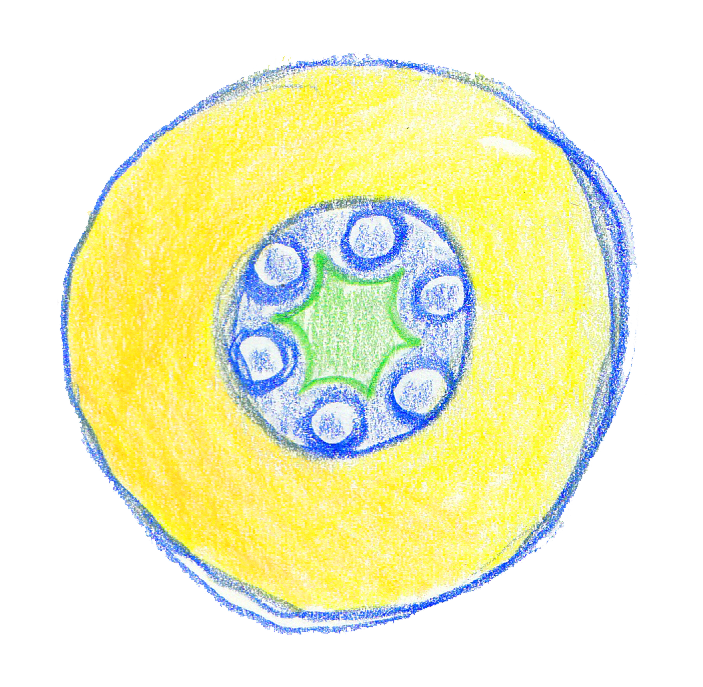Leah Murphy’s Fibre
As part of my work with the University of Bath’s Physics department, I have been speaking to some of Dr. Harringtons fellow researchers and Phd students.
I caught up with Leah Murphy to talk about her work with Dr. Stephanos Yerolatsitis. Murphy joined the CPPM in 2019, and her PhD focusses on fabricating optical fibres. She is particularly interested in novel antiresonant hollow-core fibre fabrication and developing fibre fabrication techniques.
fig.1
Leah explains, “The cross-sectional structure is 6 hollow rings surrounding a hollow core. No nested structures or anything fancy, but it works really well.” (fig.1).
“The reason why myself and Stephanos made this fibre a couple of years ago was because we were trying to make an optical fibre that was capable of carrying really powerful light (ultra-short pulsed light with really high peak powers).
Hollow-core fibres are good at this because they guide light in air instead of in solid material like a conventional optical fibre. This means that they have a higher damage threshold so are capable of carrying the light without breaking. Guiding light in air also means that they have a lower nonlinear coefficient which means that the intense light is less likely to cause nonlinear effects (which do funky things to the light being guided).”
“The fibre is designed to guide green light, (fig2.) and I've included a couple of cool pictures (fig.5 & 6). The first is just an optical microscope image of the fibre lit from the top. The second is an optical microscope image of the same fibre showing it being lit from underneath so you can see it guiding the green light in the core. The third is a pic of the output pattern of powerful light from our laser being guided through and exiting the fibre.”
fig.2
You can see the powerful green laser’s beam hitting a surface (fig.3 & 4). I asked Leah about the significance of using the colour green, thinking there would be a wave-length specific scientific answer.
It turns out that the laser was green, so the fibre needed to be designed for that wavelength range. The fibre can actually guide other wavelengths too, but it’s optimised for green in this case.
fig.4
fig.4 The green laser reflecting off a surface
fig.5
fig.6
Leah Murphy’s paper developing a new way to make hollow-core fibres which allows us to make kilometres of mid-IR guiding hollow-core fibres and novel fibre structures. In collaboration with Stephanos Yerolatsitis, Tim A. Birks, and James M. Stone.








